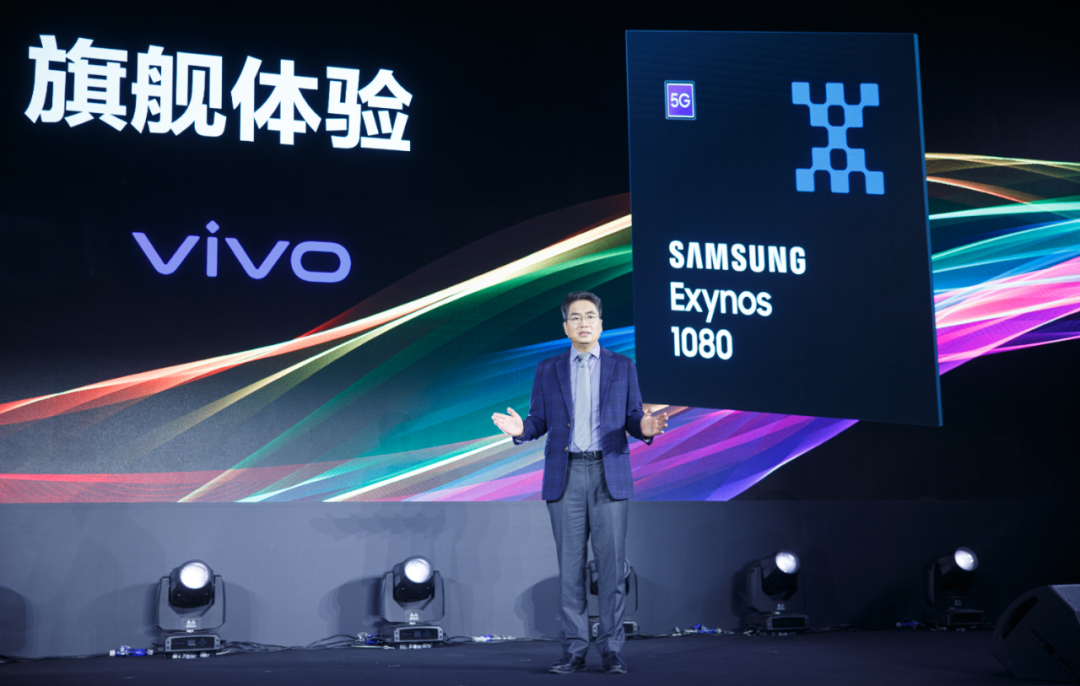
How to promote joint research and development between chip companies and terminal companies, enabling chip companies to better understand users, allowing mobile phone companies to delve deeper into chip development, and swiftly addressing user pain points has always been a key topic of discussion and thought in the industry.
Author: Su Yi
Editor: Zi Qi
5nm is currently the highest process technology in chip manufacturing and a battleground for various chip companies and leading smartphone manufacturers.
On November 12, Samsung launched its new generation 5G flagship processor Exynos 1080 for the Chinese market. This is the world’s third mass-produced 5nm flagship processor, featuring numerous characteristics and advantages, such as the combination of ARM’s latest CPU A78 and GPU G78 cores, a new AI and imaging solution with NPU, DSP, and ISP, Samsung’s latest 5G modem, and a renewed collaboration with vivo for development… All these factors make Exynos 1080 a focal point of industry and user attention.
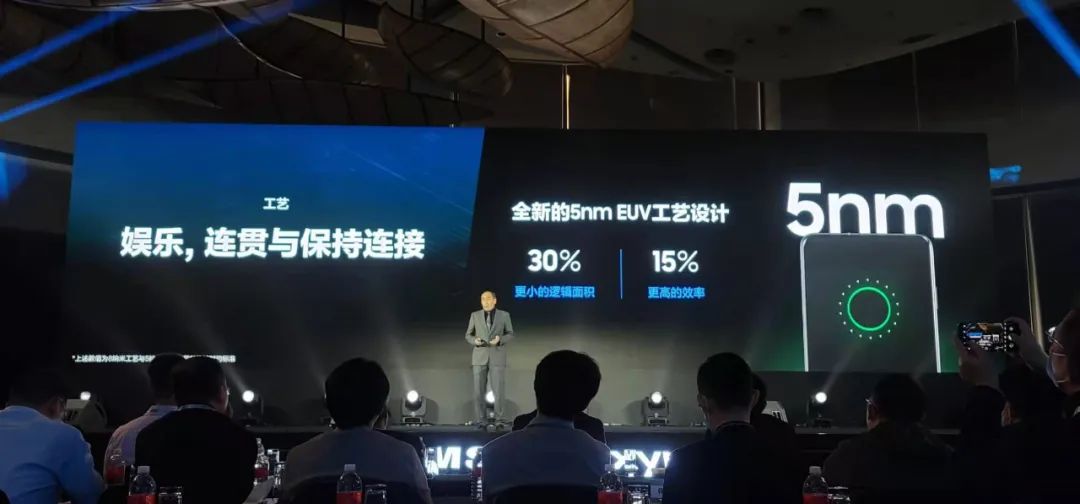
01
New Flagship Processor Samsung Exynos 1080
Exynos 1080 is Samsung’s first processor manufactured using the latest 5nm EUV FinFET process, which provides high performance, low power consumption, low heat generation, and a smaller size, all of which help solve design challenges for 5G flagship smartphones and address user pain points.
Another key focus is the architectural advantages of Exynos 1080:
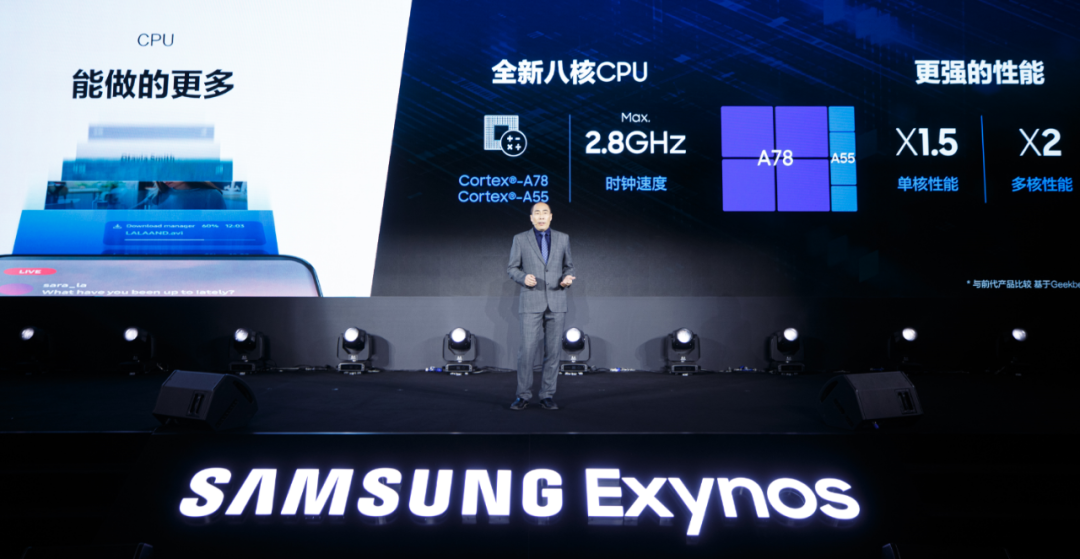
The CPU features a tri-cluster octa-core design, consisting of one high-performance 2.8GHz core based on the latest ARM Cortex-A78 architecture, three high-performance 2.6GHz cores, and four energy-efficient 2.0GHz cores based on the Cortex-A55 architecture. The performance is nearly double that of the previous generation, while also balancing power consumption and battery life, providing better performance in multitasking scenarios.
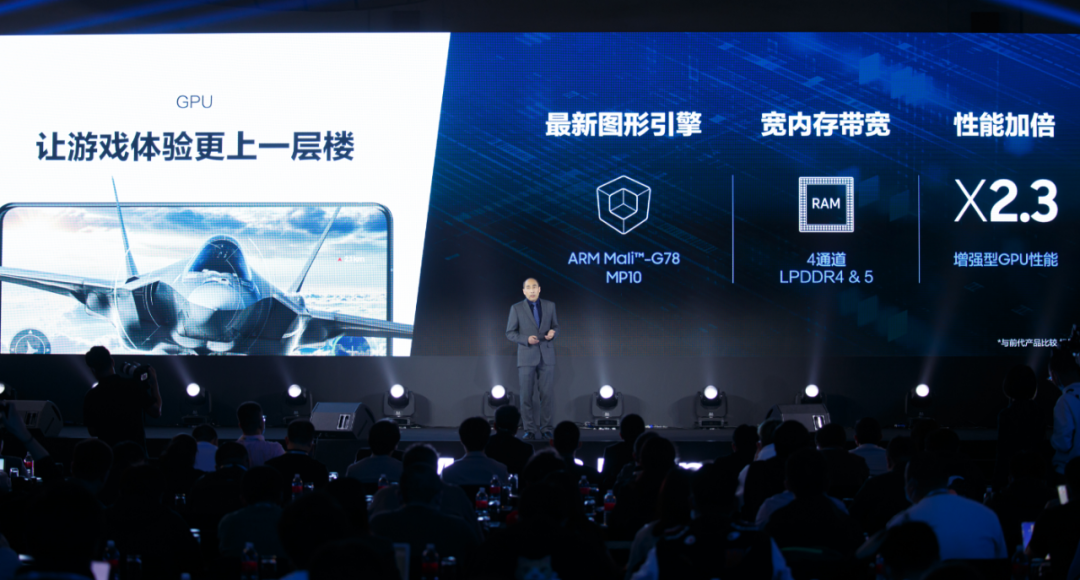
The GPU is based on the latest ARM Mali-G78 architecture of the second-generation Valhall, with performance improved by more than two times. The benefits are evident: it can smoothly run demanding large video games; supports high frame rates of up to 144Hz at FHD+ resolution, providing a smoother interaction and gaming experience.
According to official ARM data, under the same process conditions, the CPU performance of A78 is about 20% higher than that of A77, and the GPU performance of G78 is 25% higher than that of G77. AnTuTu benchmark scores reach as high as 693600, with CPU scores at 181099 and GPU scores at 297676, confirming the performance improvement data released by Samsung and ARM — this is a true industry-leading 5G flagship processor.
AI performance and imaging experience are also key concerns for flagship users. Exynos 1080 is equipped with a dedicated NPU and built-in AI solutions, enhancing user experience in scenarios such as XR/VR, smart voice interaction, and AI recognition/enhancement in photography. In terms of mobile video, the new MFC (Multi-Format Codec) supports encoding and decoding of 4K resolution video at 60 frames per second, allowing users to shoot and edit HDR10+ videos according to their needs.
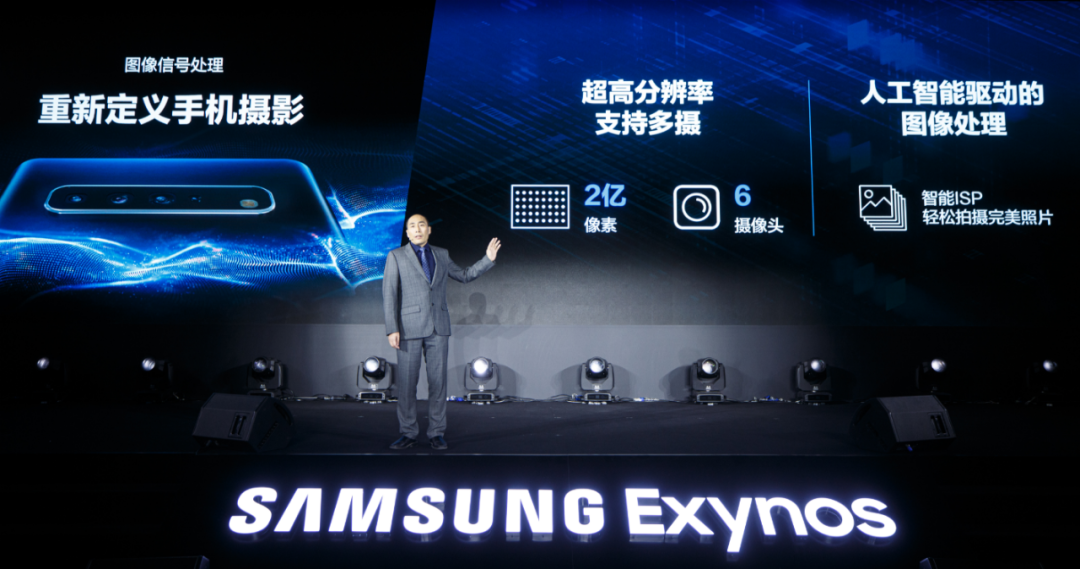
The newly upgraded ISP (Image Signal Processor) supports image sensors with up to 200 million pixels, capable of receiving signals from up to six sensors/camera lenses and performing operations on three of them simultaneously, providing ample innovative space for future imaging upgrades and evolution in flagship smartphones.
5G connectivity and transmission are essential for a complete experience in flagship smartphones; any “shortcomings” can affect users’ high-speed network and application experience. Exynos 1080 integrates Samsung’s latest 5G modem chip, with peak download speeds reaching 5.1Gbps, supporting all 5G standards below 6GHz and millimeter-wave spectrum, meeting the global network coverage and reliability needs of 5G flagship smartphone users. Exynos 1080 also supports the latest WiFi 6 and Bluetooth 5.2 technologies, providing users with better indoor WiFi connectivity and audio experiences with TWS wireless headphones. Support for LPDDR4+LPDDR5 memory and UFS 3.1 flash storage benefits smartphone manufacturers in creating a complete high-performance hardware combination and high connectivity + transmission solutions, fully meeting users’ expectations for performance and speed in new 5G flagship smartphones.
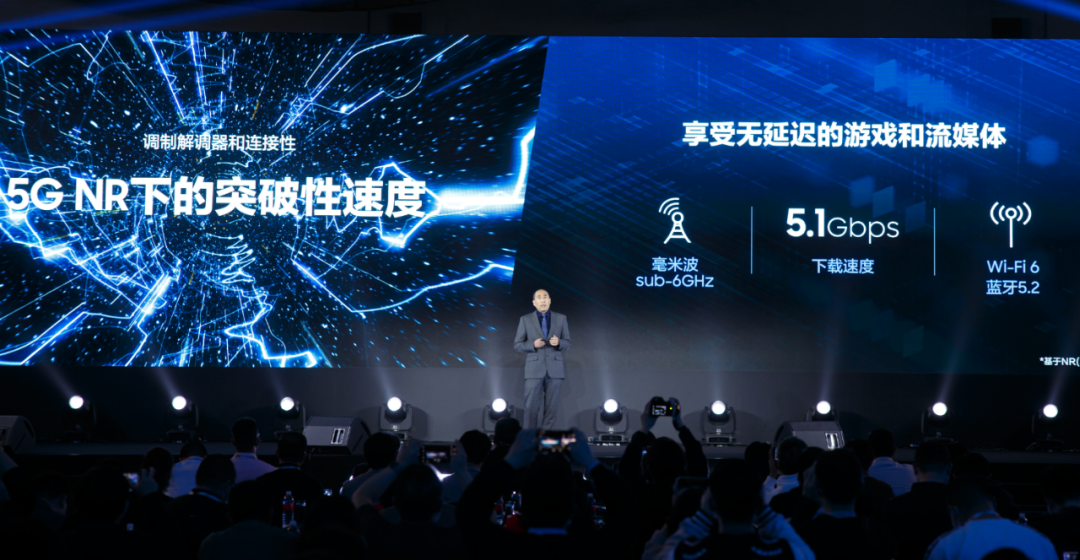
From this perspective, Samsung Exynos 1080 is a latest 5G flagship processor with top global process and architecture, strong performance, and differentiated advantages in AI, mobile imaging, and 5G. For Android smartphone manufacturers, it provides more processor options in building 5G flagship smartphones, facilitating product differentiation and enhancing the richness and user choice in the entire 5G flagship market.
02
The Strengths and Variables Behind Exynos 1080
Core semiconductor technology is regarded as the “crown” of the technology industry and is one of the most critical components in the smartphone industry.
Behind an Exynos 1080 processor lies Samsung’s deep accumulation and technological innovation in the semiconductor field over half a century, along with top-notch design, manufacturing capabilities, and industry influence.
Since becoming the world’s number one in the memory semiconductor industry in 1993, Samsung has maintained an absolute leading position in the industry. In 2017, Samsung surpassed Intel to become the largest chip supplier globally.
Currently, Samsung has four leading advantages in the global mobile semiconductor field:
First, it is one of the two manufacturers globally with 7nm and 5nm manufacturing processes (the other being TSMC) and the only company capable of designing and manufacturing mobile application processors using advanced processes simultaneously.
In contrast, other companies can only either outsource manufacturing or have experience only in chip design and terminal applications, lacking the capability for a full-process one-stop solution for core mobile processors. In addition to producing its own Exynos brand chips, Samsung has also manufactured flagship chips for clients including Qualcomm and Apple. Before 2014, it was Apple’s exclusive manufacturer for processors for many years, and Qualcomm’s Snapdragon 820, Snapdragon 835, and the latest generation Snapdragon 865 processor, all manufactured using 10nm and 7nm processes, were also produced by Samsung, fully demonstrating Samsung’s strong capabilities and industry position in mobile processors.
Second, it is the only top semiconductor company in the industry that can provide a complete range of product combinations for the mobile terminal industry.
It offers mobile processors, image sensors, biometric processors, embedded processors, memory, flash storage, and equally top-notch display solutions. At major smartphone manufacturers’ product launches, Samsung’s “Super AMOLED screen” is one of the most frequently mentioned keywords. According to a report released by market research firm IHS Market in March this year, Samsung holds a market share of 81.2% in the global mobile OLED screen sector. In the image sensor field, the “100 million pixel” image sensors used in Samsung S20 Ultra, Xiaomi 10 Pro, and vivo X50 Pro+ also come from Samsung.
Third, it has a high investment and focused technological research and innovation advantage.
Samsung is the technology company with the highest R&D investment globally. According to a report released by the European Union, from 2017 to 2018, Samsung’s R&D expenditure reached €13.437 billion (approximately ¥105 billion), ranking first among all companies globally, even surpassing global internet giant Google (€13.388 billion) and automotive giant Volkswagen (€13.135 billion). Well-known American tech companies like Microsoft, Intel, and Apple ranked fourth, sixth, and seventh, respectively.
In response to the significant chip technology changes and new market demands in the era of technological transformation, Samsung’s semiconductor system large-scale integration business (S.LSI) launched the “Vision 2030” innovation and development plan in 2019. According to South Korean media reports from BusinessKorea, the company plans to invest approximately $110.51 billion (about ¥861.9 billion) by 2030 to achieve the position of global leader in the semiconductor market outside of memory. This is also the strongest innovation investment and development plan in the global semiconductor industry, which will drive strong innovation in Samsung’s mobile processors, 5G, AI, and other fields.
Fourth, industry joint research and development make chip innovation closer to consumer needs.
For a long time, mobile chip companies have primarily focused on technological research and development, with sales directed towards smartphone companies as B2B clients, while terminal companies directly face the general consumer market, being more sensitive to user pain points and rapid market changes. How to promote joint research and development between chip companies and terminal companies, enabling chip companies to better understand users, allowing mobile phone companies to delve deeper into chip development, and swiftly addressing user pain points has always been a key topic of discussion and thought in the industry.
The Exynos 980, the world’s first dual-mode 5G AI chip jointly developed by Samsung and vivo in September 2019, is an important realization of this collaborative innovation thinking model. According to media reports, vivo deeply engaged in the joint research and in-depth definition of Exynos 980 through a “front-end R&D” strategy, and the two parties solved over 100 user experience enhancement issues through nearly a year of collaboration. Vivo invested over 500 professional R&D engineers, adding more than 400 functional features to Samsung’s Exynos 980, resulting in significant improvements in 5G RF solutions, imaging capabilities, and power consumption standards.
For Samsung, this has provided important capabilities to be closer to Chinese consumers and the trends of the 5G industry. For vivo, it has gained a more compatible 5G flagship chip compared to other smartphone companies, allowing it to leverage its technological advantages to create more differentiated flagship products for vivo users, and achieve a more flexible and autonomous iteration pace for 5G flagship products compared to most other smartphone companies. This industry joint innovation model will also be one of the biggest technological innovation and industry popularization variables for Samsung’s Exynos mobile processors in the future.
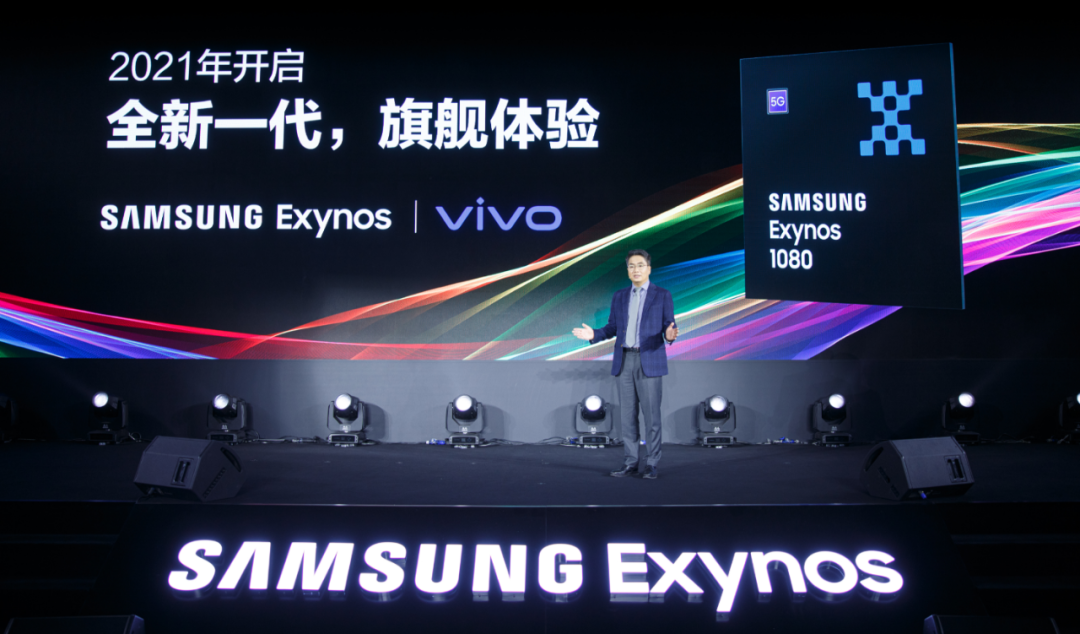
03
Comments from Yi Observation
Mobile processors are one of the core components that determine the performance and experience of flagship smartphones, making them the most competitive and top-tier field among chip companies and smartphone manufacturers.
In light of the upcoming 5G smartphone market and new technological transformation trends, the requirements for large computing on the edge, high-speed + low-latency network connections, and innovations in imaging and AI applications are driving further upgrades in 5G processor competition.
With top process and architectural advantages, and significant differentiated capabilities in 5G, AI, and mobile imaging, Samsung Exynos 1080 flagship processor provides a new choice for the high-end chip market and is conducive to promoting the diversification of the global smartphone chip supply chain.
It is noteworthy that Chinese smartphone companies, represented by vivo, have entered the pre-research and deep definition phase of core processors in the 5G era, marking an important innovative exploration in the chip R&D model of Chinese smartphone manufacturers, which is particularly relevant in today’s industrial environment.
It is reported that the newly launched Exynos 1080 for the Chinese market is expected to debut in the new generation of vivo 5G flagships. This is highly anticipated as China’s 5G smartphones enter a phase of widespread adoption in the fourth quarter of 2020, with the 5G differentiated experience created in close collaboration with vivo to meet Chinese user needs being particularly exciting.
END
Founder of Yi Observation: Su Yi
Former Chief Editor of Sohu Technology Communications
Search “Yi Observation” on Toutiao, Tencent News, and Sohu
Search “Su Yi” on Baijiahao, Weibo, and Douyin for more
丨Smart Hardware丨Communications丨New Retail丨Artificial Intelligence丨
丨Smart Internet of Vehicles丨Smart Home丨
For reprints and collaborations, contact WeChat: yiguancha_01